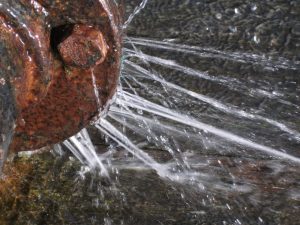Water, Water Everywhere: Understanding our Water Infrastructure
Staying afloat of our nation’s growing water infrastructure problems means understanding the culprits
Water main breaks, “Do not drink” orders, and water leak emergencies are headlines we are used to seeing as across the nation, Americans learn that the country is losing an estimated 2.1 trillion gallons of water each year due to leaking pipes, broken mains, and faulty meters.
The problem is that amongst all the infrastructure systems we have – transportation, telecommunications, air traffic control – water and sewer pipelines are mostly hidden from our daily lives. We often don’t know there is a problem, until there is one.
And yet, our water system is one of the most important and economically viable infrastructure systems we have in our country. The US Department of Commerce Bureau of Economic Analysis estimates that for every dollar spent on water infrastructure, about $2.62 is generated in the private economy, and for every job added in the water workforce, about 3.68 jobs are added to the national economy.
A recent article from National Public Radio blames much of the problem to aging pipes originally installed close to 100 years ago. In many cases, however, that isn’t necessarily the case. Some pipes can last hundreds of years in proper soil conditions. In other cases pipes just a couple of decades old can be found in complete disrepair because of the environment around the pipe.
Just think about your town and how it has developed over the last 10,15, or even 20 years. The town is probably unrecognizable compared to what it looked like 100 years ago when many of the same water lines we use today were installed. New elements, often corrosive ones, may have been introduced into the soil surrounding the pipelines including landfills, cinders in the pavement, contamination, stray currents, and high groundwater. These elements represent only a few that will degrade the exterior of the pipe over time, ultimately causing failure. By understanding why pipes fail and documenting corrosive areas, communities can focus their limited dollars on replacing pipes with a high risk of failure.
It has been estimated that over the next 20 years, upgrading municipal water and wastewater systems is expected to cost between $3 and $5 trillion. Building and replacing water and sewage lines alone will cost some $660 billion to $1.1 trillion over the same time period. This is money utilities will need and that states do not have to give. With water rates already on the rise, more has to be done to cost efficiently upgrade our infrastructure.
While the country is now faced with the inevitable burden of paying for upgrades, many in the industry argue that there is an efficient way to modernize our water infrastructure without breaking the bank. A suite of cost-effective approaches to reducing water loss and providing smart, responsible water service to customers are now being employed in municipalities across the country. Best practices include state-of-the-art auditing methods, leak detection monitoring, targeted repairs or upgrades, pressure management, and better metering technologies. By adopting such practices, water service providers can save themselves and their communities money in the long run, while protecting water resources and generating economic growth.

